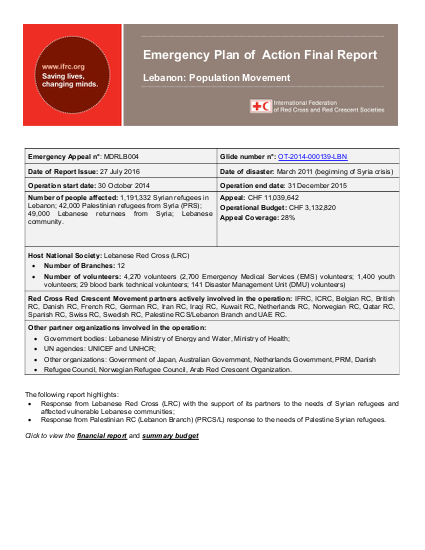
With the Syria crisis exceeding five years, the resilience of both refugees in Lebanon and the host population were tested as resources dwindled. Concerns arose regarding the living conditions of refugees exhausting their savings and resources, as well as the situation facing the Lebanese population hosting refugees in areas that already suffered higher poverty levels and low employment rates. Host communities found themselves in direct competition in the commercial sector, in the labour market and for limited public and social services. With a population increase of around 30 per cent , public infrastructure in Lebanon such as water, sanitation and waste management, already constrained and underresourced before the crisis, were considerably stressed.
The burden on public health, social services and education facilities rose considerably. The LRC extended its operations to provide assistance to refugees coming from Syria since the beginning of the crisis, calling for a scaling up of its capacity. Accordingly, LRC worked on strengthening its financial management including the restructuring of its financial department, planning, monitoring, evaluation and reporting (PMER) and logistics capacities, as well as other cross-cutting capacities such as psycho-social support.
IFRC launched an Emergency Appeal of CHF 18,644,090, later revised to CHF 11,039,642. At close, the appeal coverage stood at 28 per cent , equating to a funding gap of CHF 7,906,822.
